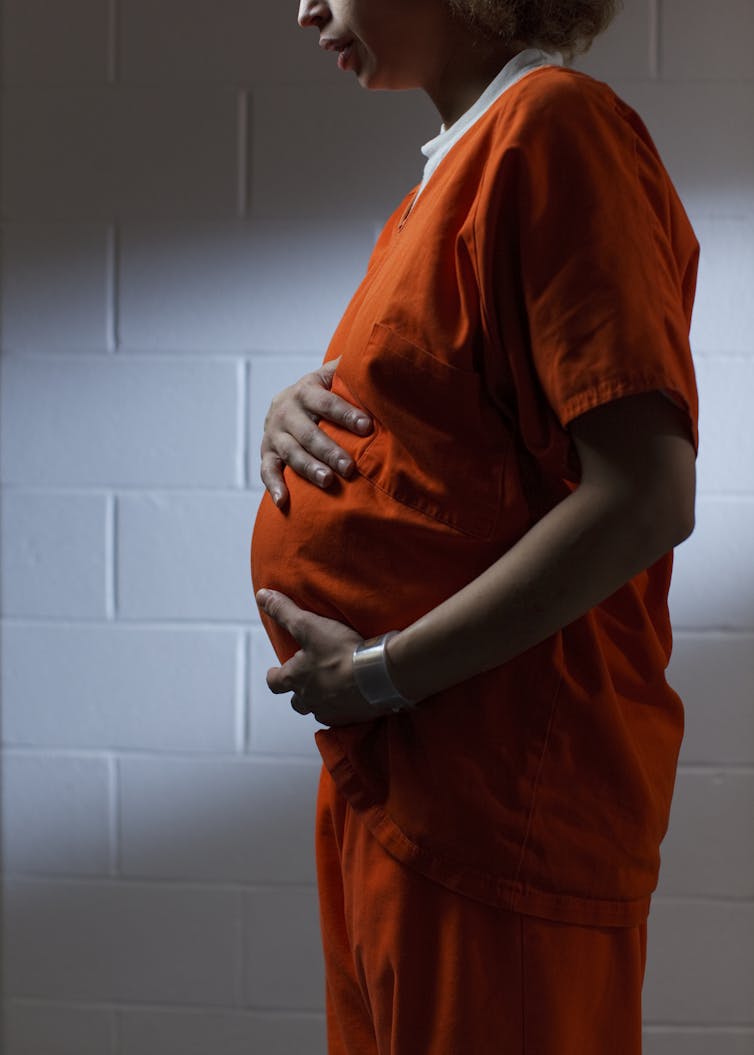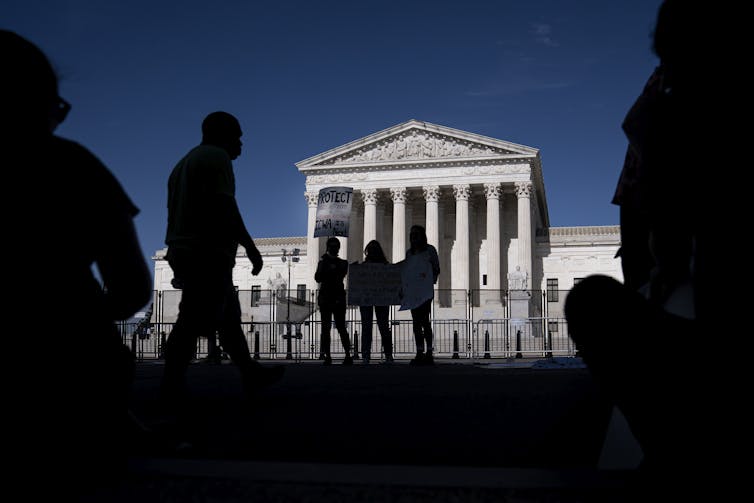
It’s clear that the Supreme Court’s ruling in Dobbs v. Jackson Women’s Health Organization will make it harder for women to get an abortion across much of the United States. But there are other kinds of laws – not related to abortion – that already control the decisions women make during pregnancy.
In this scenario, a state concludes a pregnant woman’s conduct, mostly related to substance use, might harm the fetus they are carrying. These women are then forced into mandatory treatment or jail. Most of the women affected by these laws are poor, and disproportionately Black or Latina.
I am a law professor who studies poverty policy in the U.S. I think it is key to understand that the Dobbs ruling not only allows state legislatures to limit women’s ability to get an abortion, but it also invites state legislatures to pass more laws that control pregnant women’s behavior.

States’ history of punishing women during pregnancy
At least 40 states have used a variety of laws to punish the behavior of pregnant women over the last five decades. These cases usually involve a woman whom the state believes is harming her fetus by taking drugs or abusing alcohol.
For example, as I describe in my book coming out in September, Tennessee prosecuted and punished about 120 women from 2014 to 2016 for harming the fetuses they were carrying when they took narcotics during their pregnancies.
In total, scholars, journalists and activists have documented over 1,700 prosecutions and other interventions, like jailing a woman who refuses to enter treatment, against pregnant women from 1973 to 2020.
States have prosecuted women, in these cases, for assault, chemical endangerment, child abuse and murder.
Although in most cases these laws were originally passed to criminalize other people’s attacks against pregnant women, prosecutors have used these laws to prosecute pregnant women themselves.
While one might think that bringing prosecutions and jailing women to protect a fetus from her mother’s drug use might be an effective, if extreme, way to protect the fetus, virtually every major medical organization disagrees.
Research shows that incarcerating pregnant women because of substance use is not effective as a deterrent and can actually harm both the pregnant person and fetus.
One reason is that there is significant anecdotal evidence that jails and prisons lack basic prenatal care services. The vast majority of jails also do not provide adequate health care services for pregnant patients with substance use disorders.
Another reason is that women who know that they might be punished if they go to the doctor are likely to avoid the doctor, a result that can harm both mother and child.
Instead, the American Medical Association and other expert groups recommend that the government spend more money setting up specialized treatment programs for pregnant and breastfeeding women with substance use disorders.
Jailing pregnant women to protect their fetuses
In addition to criminal prosecutions, there are at least two other kinds of state laws that let judges involuntarily commit and jail pregnant women.
First, judges in Tennessee have used state law to jail pregnant women who are on probation when the court has evidence that the woman is using drugs during pregnancy.
As one court staff person explained to me, when a criminal court judge finds out that a pregnant woman who is on probation has failed a drug test, the court issues an order putting her in jail. As that particular Tennessee court worker explained to me in 2018, “A lot of babies have been saved that way.”
Second, in Wisconsin, South Dakota and Minnesota, legislatures have authorized the involuntary commitment, either in medical facilities or jail, of pregnant women who use drugs or alcohol during pregnancy.
For example, in Wisconsin, the state can investigate the welfare of an “unborn child” and can order a woman to comply with drug treatment and services. If she refuses, the court can mandate that this woman is arrested and jailed.
Because child welfare records are confidential, we do not know precisely how many cases like these exist. In one court case, the state of Wisconsin revealed that, from 2006 to 2017, 467 women were found to have committed “unborn child abuse,” meaning that the state believed these women harmed their fetuses.

Dobbs invites states to pass more laws like these
In one sense, Dobbs has little impact on these kinds of laws. Roe v. Wade and the 1992 case that reinforced its precedent, Planned Parenthood v. Casey, never stopped these prosecutions and interventions, and they would have continued even if the Supreme Court didn’t overturn these rulings.
On the other hand, it is clear that the Dobbs ruling grants state legislatures new license to pass laws in the name of fetal protection.
Prior to Dobbs, constitutional law balanced the rights of a pregnant woman to control her pregnancy against the state’s legitimate interest in the fetus.
That is why, under Roe and Casey, a woman’s interest in controlling her body outweighed the state’s interest in the fetus early in a woman’s pregnancy. As a pregnancy progressed, the balance shifted away from protecting the woman’s autonomy and toward protecting the state’s interest in the fetus.
But as Supreme Court Justices Stephen Breyer, Elena Kagan and Sonia Sotomayor explain in their dissenting opinion with the Dobbs ruling, “the Court discards that balance. It says that from the very moment of fertilization, a woman has no rights to speak of.”
So who will look out for the rights of either the mother or the fetus?
The Supreme Court is clear. As Justice Brett Kavanaugh explained in his concurring opinion, “those difficult moral and policy questions will be decided” not by the court, but “by the people and their elected representatives through the constitutional processes of democratic self-government.”
After Dobbs, as the dissenting judges explained, it seems the states have all the power they need to pass and enforce new laws that punish pregnant women, whether or not they want to get an abortion.
Wendy Bach does not work for, consult, own shares in or receive funding from any company or organization that would benefit from this article, and has disclosed no relevant affiliations beyond their academic appointment.
This article was originally published on The Conversation. Read the original article.







